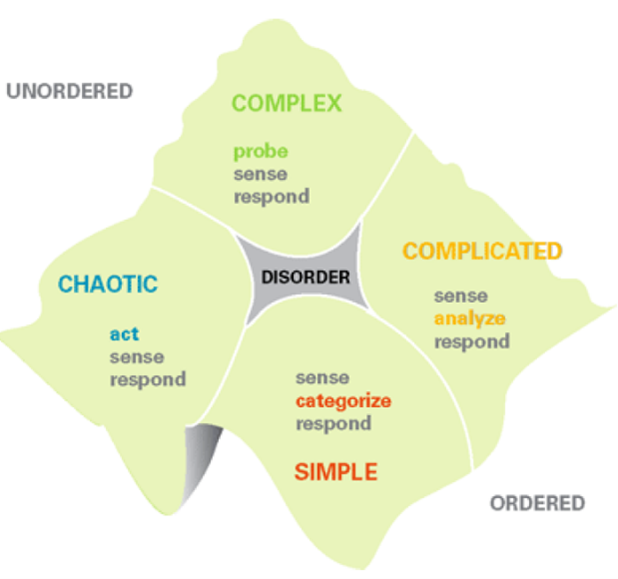How Can Leaders Bring Valuable Context to Decision Making?
Good business requires good decision making. However, good decision making is not something that happens naturally. In a McKinsey Survey of 2,207 executives, only 28 percent said that the quality of strategic decisions in their companies was generally good, 60 percent thought that bad decisions were about as frequent as good ones, and the remaining 12 percent thought good decisions were altogether infrequent. The same article highlights that the use of process outweighed analysis by a factor of 6 in the variance of decision outcomes.
Leaders have a variety of decision-making frameworks available to provide a structured process for making good decisions. We will explore some of these frameworks in future articles, but today we will look at a high-level framework that can help categorize issues and allow leaders to understand the broader context. From this vantage point, a leader can apply the most appropriate leadership style and decision-making process to tackle the issue.

-
Simple – The Domain of (current) Best Practice
Leadership Actions: Sense, Categorize and Respond.
This is a stable context with clear cause and effect relationships easily discernable by everyone. Decisions are unquestioned, as all parties agree and have a common understanding. Management is straightforward and processes can be detailed and repeatable.
There is a risk of issues being oversimplified and wrongly put into the “Simple” category. As well, there is a risk of complacency, which negates continuous improvement being applied, and more significantly, when leaders don’t pay attention and miss a change in the environment, they may react too late to an issue leading to significant consequences.
-
Complicated – The Domain of Experts
Leadership Actions: Sense, Analyze and Respond.
This is the realm of known unknowns. There is a clear cause and effect relationship, although not easily seen, and there may be multiple right answers. Expertise is required to discern the best options.
There is a risk of the experts having entrained thinking and applying patterned solutions based on past experience. Leaders must recognize when non-expert ideas with a fresh view warrant consideration. Analysis paralysis is also a risk and can lead to an inability of the experts to agree on the “best” decision. Intervention may be required to ensure a decision is made.
-
Complex – the Domain of Emergence
Leadership Actions: Probe, Sense and Respond.
This is realm of unknown unknowns. Contemporary business works in this realm much of the time. In this domain, a right answer can’t be drawn out based on experience or expertise. There is constant flux with disparate environments affecting each other – a broader view is required to navigate complex environments.
A complex environment requires experimentation to reveal patterns (which are constantly changing). Test and adapt is the required continuous cycle.
There is a risk of falling back to command-and-control management, and try to make a fail-safe business, however, the opposite is required as experimentation, and by definition acceptance of failure, is the core requirement to navigating a complex environment.
-
Chaotic – The Domain of Rapid Response
Leadership Actions: Act, Sense and Respond.
This is the realm of unknowables. Searching for the right answer is pointless as the relationship between cause and effect cannot be determined.
Leaders must act to establish order and stop the bleeding and determine where there is stability. Communication is direct top-down and/or broadcast widely. This is essentially crisis management where a quick response and command-and-control leadership is required.
Chaotic environments are relatively rare, however there is a risk that leaders who are successful in chaotic environments develop an over-inflated self image, and there is a risk that they apply the command-and-control leadership style as a regular course of action because of their past success.
-
Disorder
When none of the other 4 types applies. Time to put all the heads together (quickly) to figure out the next steps.
Leaders are expected to bring context to their teams. There is no more important time to do this than decision time. Applying the Cynefin Framework before you tackle a decision can give you that context to help you lead the process effectively.

